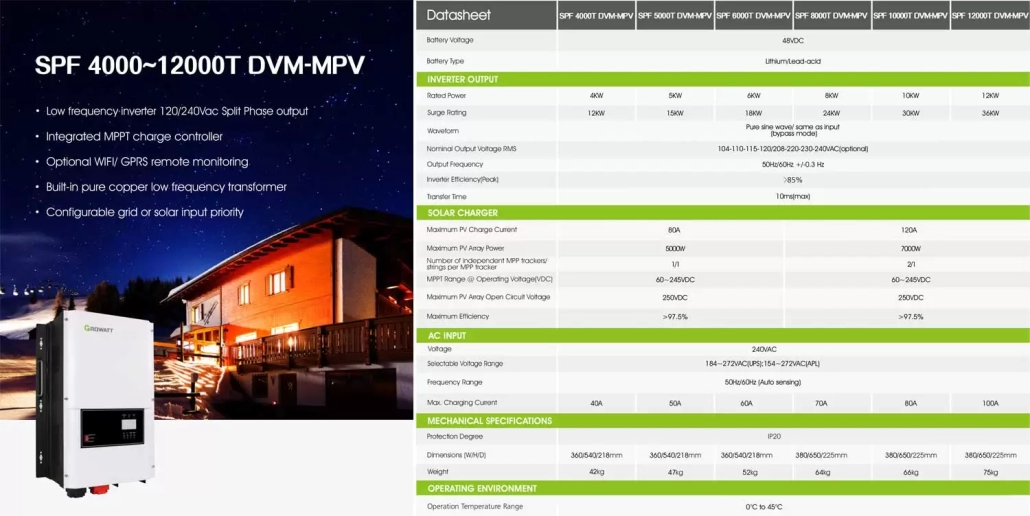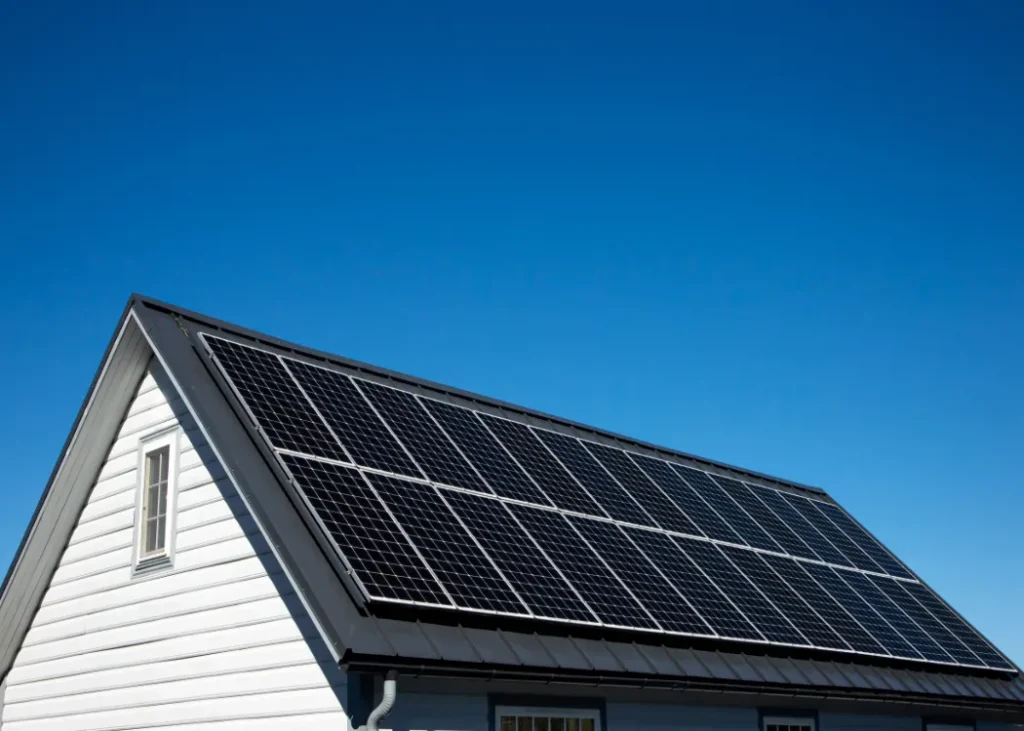How to choose the right off grid solar kit for your energy-hungry home?
High-energy homes (generally those with electric heating, air conditioning, major appliances, and numerous electronic devices) often use more than 30 kWh daily. When choosing an off-grid solar kit, first compile 12 months of your electric bills to determine average and peak monthly electricity use. Next, do an appliance inventory: record the power ratings of your HVAC system, water heater, refrigerator, lighting, and entertainment equipment. Also consider seasonal variations, such as heating and cooling loads, that can double your electricity use during peak summer and winter.
Once you have a complete energy picture, calculate your daily kilowatt-hour (kWh) needs. Conservatively, a home using 45 kWh of electricity per day would require a system capacity of approximately 55 kWh per day, assuming an average of 4 hours of peak sunlight per day. This initial calculation recommends an 18Kw off grid solar kit, which combines ample battery storage with an efficient inverter to meet high daily demand while ensuring continuous, reliable power delivery.
Off grid solar kit for high-energy homes
For homes with high energy demands, the 18kW off grid solar kit is a balanced solution that combines powerful power generation with ample energy storage. At the heart of its configuration is the SPF 18000T DVM-MPV inverter, which is designed to handle peak loads up to 18kW while providing seamless off-grid functionality. The solar inverter’s dual-mode design supports AC coupling for grid-connected flexibility and DC coupling for pure off-grid flexibility.
In addition, 36 550W monocrystalline solar panels are included, which can generate a total of 19.8kW of DC power under standard test conditions. The panel layout considers derating factors in actual applications, such as temperature coefficient, pollution, and inverter efficiency, ensuring that the system always reaches the 18kW output target during peak sunshine hours. They can match the MPPT input voltage range of the solar inverter, allowing for flexible array design and simplified wiring.

The core component of the off grid solar kit: SPF 18000T DVM-MPV inverter
As the core component of the off grid solar kit, the SPF 18000T DVM-MPV inverter has an 18 kW continuous rated output power and up to 30 kW surge capacity to accommodate high-drain loads without compromising stability. Its MPV function seamlessly switches between solar, battery, and backup generator inputs to ensure uninterrupted power even during extended cloudy days.
The SPF 18000T model also integrates an advanced battery charging algorithm that supports lead-acid and lithium batteries and features programmable bulk, absorption, and float charge stages to maximize battery life. Its user-friendly touchscreen interface and remote monitoring capabilities allow homeowners and technicians to monitor system performance in real-time and adjust settings based on changes in usage patterns or seasonal conditions.

Power Generation with 36×550W Monocrystalline Solar Panels
The 18 kW off grid solar kit deploys 36 panels rated at 550 watts, with a total array capacity of up to 19.8 kW. Monocrystalline panels are the industry standard for high efficiency and space-constrained installations, converting up to 22% of sunlight into electricity under optimal conditions. Their uniform black appearance also appeals to homeowners seeking a low-profile and aesthetically pleasing rooftop solution.
When you install solar panels in a section that avoids trees or chimneys, bifacial solar panels can increase power generation by capturing reflected light from the roof surface. Still, you need to choose the installation height and reflective ground material. In addition, you should choose solar panels with a stable temperature coefficient (usually about -0.35%/°C) to reduce performance losses on hot summer days.

Use 2×48V 19.2 kWh lithium batteries to store energy.
Off grid solar kits must be equipped with a powerful energy storage system to cope with the power demand during the non-sunny period. High-demand homes require ample battery capacity, and the 2×48 V 19.2 kWh lithium battery configuration has a total energy storage capacity of up to 38.4 kWh, enabling your system to power essential loads at night or in bad weather, thereby meeting the daily electricity needs of energy-intensive homes.
LiFePO₄ batteries have a deep cycle life, typically exceeding 4,000 cycles at 80% depth of discharge, extremely low maintenance costs, and superior safety compared to lead-acid batteries. At the same time, the 48 V system voltage is perfectly matched to the DC-DC stage of the SPF 18000T inverter, thereby reducing conversion losses. Their integrated robust BMS further protects the battery from overcharge, over-discharge, and extreme temperatures, ensuring the long-term reliability of your off-grid solar kit deployment.
Integrate balance of system components for optimal performance.
In addition to solar panels, inverters, and batteries, a complete off-grid solar kit also requires BoS components to ensure safe, efficient, and compliant operation. These key BoS components include:
- Solar charge controller: While the SPF 18000T has integrated charge control, larger arrays may benefit from a dedicated MPPT charge controller specifically for the battery array.
- AC and DC circuit breakers: Convenient for maintenance and emergency shutdown.
- Combination boxes and fuses: Proper overcurrent protection and string-combining devices protect wires and panels from faults.
- Monitoring hardware: Data loggers and communication modules enable real-time system diagnostics via smartphone or web portal.
Ultimately, you can create a safe and efficient solar off-grid system by combining these off-grid solar kit components with well-designed best practices.
Improving off grid solar systems for high-energy-consuming homes
When choosing the right off grid solar kit for high-energy-consuming homes, we take into account accurately assessing energy needs, designing around the 18kW off-grid solar kit framework, using SPF 18000T DVM-MPV inverters, 36 550W monocrystalline silicon panels, and 2 48V 19.2kWh lithium batteries, and integrating comprehensive BoS components. This configuration provides reliable power generation, sufficient energy storage, and seamless operation in weather conditions.



